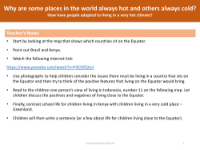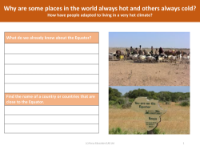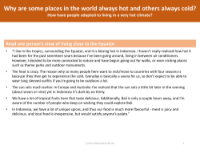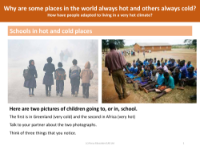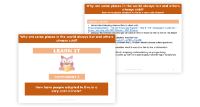How have people adapted to live in a very hot climate? - Presentation
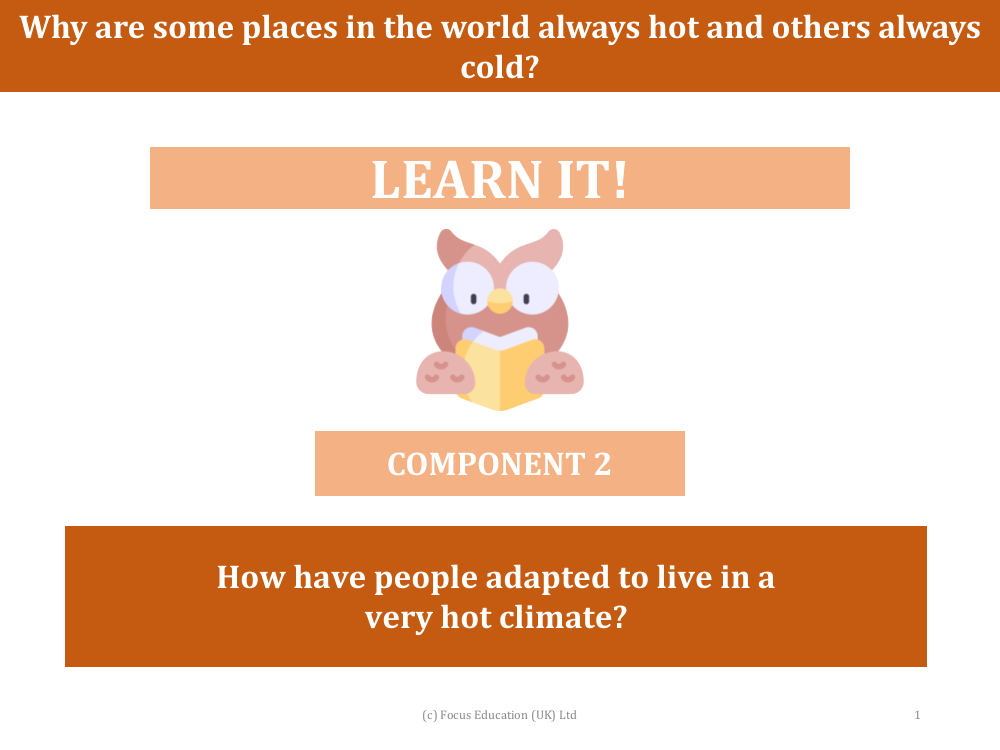
Geography Resource Description
Understanding how individuals adjust to living in extremely hot climates is an intriguing topic that delves into the geographical and cultural adaptations humans have made. The lesson begins with an exploration of the world map, highlighting countries like Brazil and Kenya that are situated on the Equator, where temperatures are consistently high. Through visual aids such as internet videos and photographs, students are encouraged to consider both the challenges and benefits of equatorial life. They are prompted to engage with a personal account from someone living in Indonesia, which is also located near the Equator, to discuss the positives and negatives of such an environment. The lesson aims to provide children with a comprehensive view of life in these hot regions, from the early sunsets to the abundance of tropical fruits and flavorful local cuisine.
Additionally, the lesson plan prompts students to compare and contrast the daily lives and school experiences of children living near the Equator with those in colder climates, such as Greenland. Through partner discussions, children are guided to think about various aspects of life in hot climates, including diet, water sources, clothing, and school infrastructure. They are also encouraged to reflect on the size and nature of towns and cities in these regions compared to their own. To further deepen their understanding, students examine photographs of schoolchildren in both hot and cold environments, noting the differences and discussing how climate shapes everyday life. The activity culminates with students writing about what they imagine life to be like near the Equator, integrating their newfound knowledge of how people have adapted to living in such hot climates.
